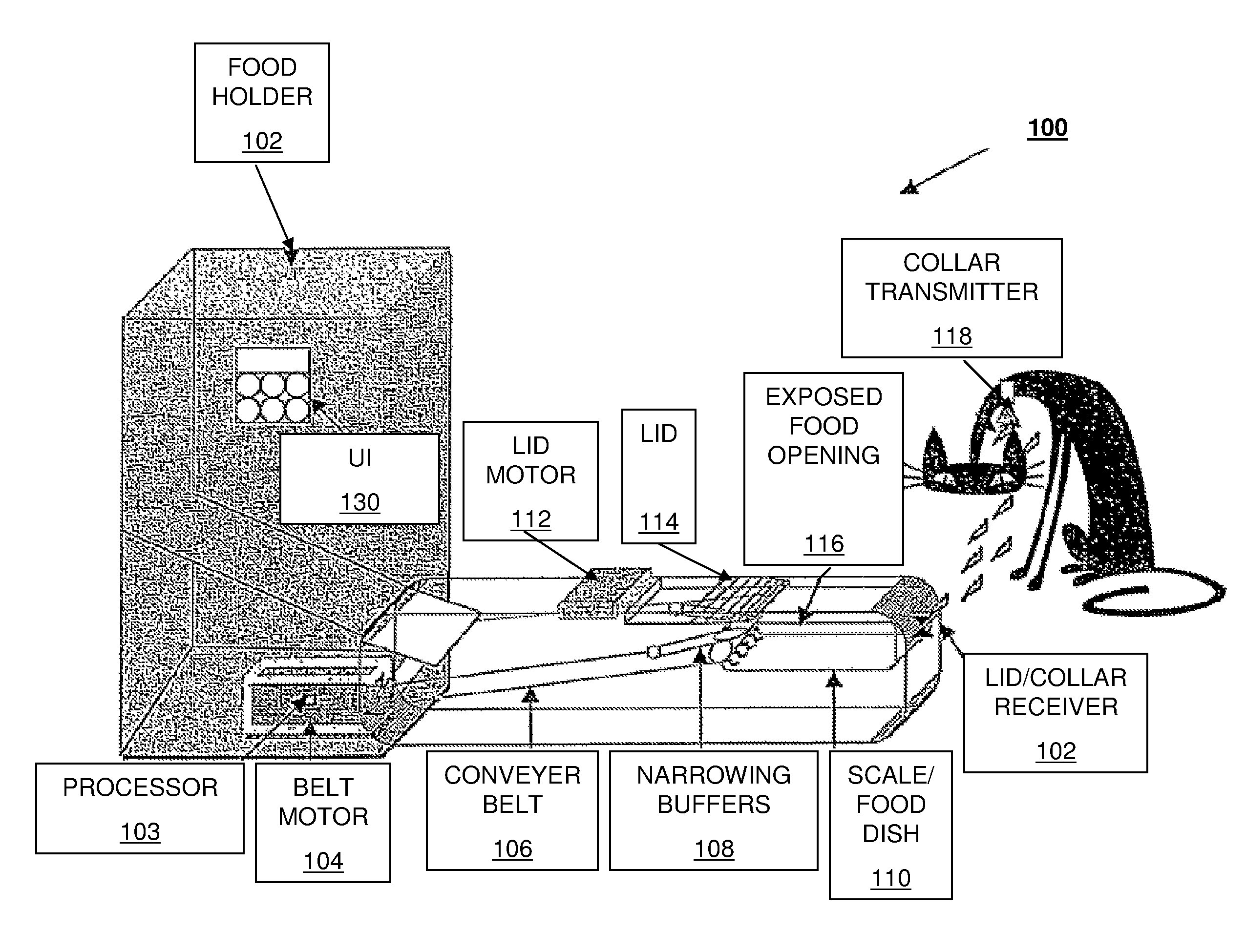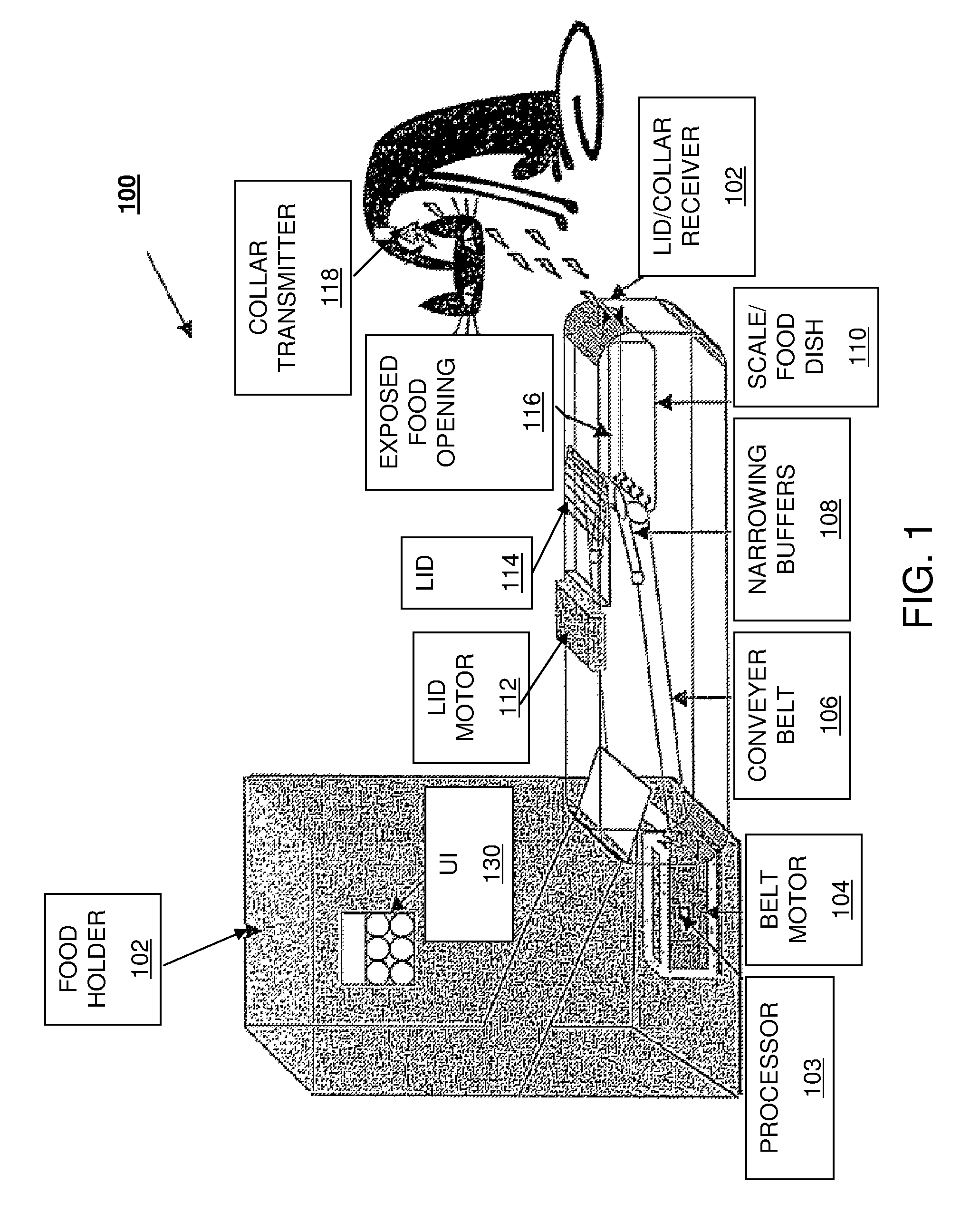System and method for weight management of one or more pets
a weight management and pet technology, applied in the field of managing pet weight, can solve the problems of not all cats appear to have the same vigor, cat is overweight, and something may not be right with the cat, so as to improve the health of the pet's eating habits, improve the health of the pet's diet, and reduce the difficulty of achieving the pet's dietary needs.
- Summary
- Abstract
- Description
- Claims
- Application Information
AI Technical Summary
Benefits of technology
Problems solved by technology
Method used
Image
Examples
Embodiment Construction
[0019]FIG. 1 is an exemplary feeding apparatus 100 that may be advantageously used with the present invention. Food holder 102 may be used to hold a plurality of items, such as food bits (e.g., dry or wet), which may be subsequently dispensed to an animal, e.g., a cat or other pet, into food dish 110. It will be understood to those skilled in the art that other types of substances may also be used in the present invention, such as medication or food treats. A pet owner may buy large amounts of pet food and place various amounts of the food (or as much food as can be held) into the food holder 102. The food holder may direct the food to a conveyer belt 106 by gravity and / or other techniques such as vibrating motions. In operation, the conveyer belt 106 may be operated by a belt motor 104 to direct any food on the conveyer belt 106 into the food dish 110. It will be apparent to those skilled in the art that other methods of operating a conveyer belt may be used in accordance with the ...
PUM
 Login to View More
Login to View More Abstract
Description
Claims
Application Information
 Login to View More
Login to View More - R&D
- Intellectual Property
- Life Sciences
- Materials
- Tech Scout
- Unparalleled Data Quality
- Higher Quality Content
- 60% Fewer Hallucinations
Browse by: Latest US Patents, China's latest patents, Technical Efficacy Thesaurus, Application Domain, Technology Topic, Popular Technical Reports.
© 2025 PatSnap. All rights reserved.Legal|Privacy policy|Modern Slavery Act Transparency Statement|Sitemap|About US| Contact US: help@patsnap.com



